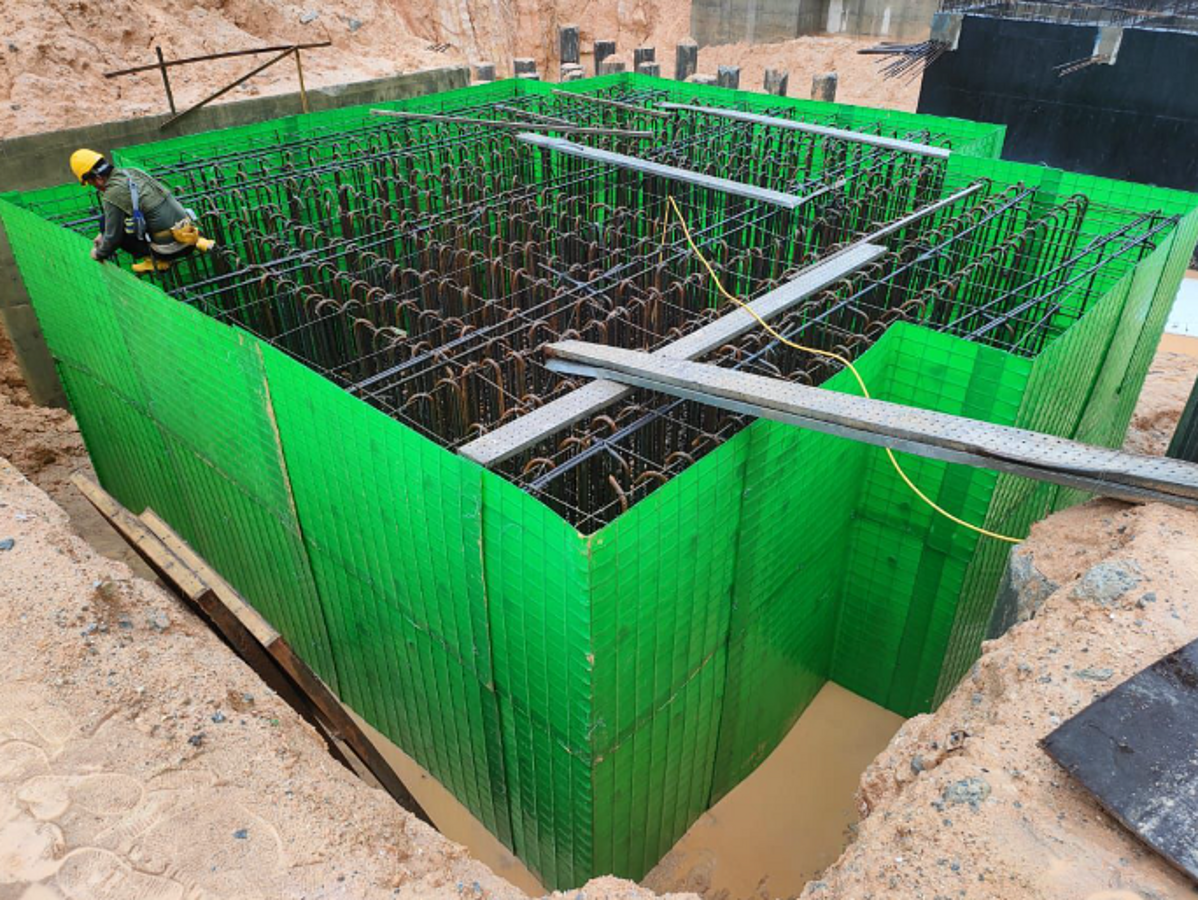President Ferdinand Marcos Jr. received resounding rounds of applause several times during his third State of the Nation Address 2024 (SONA), particularly on the final part of his speech when he announced the ban on Philippine Offshore Gaming Operators (POGO).
The SONA 2024 was held on Monday, July 22, 2024, at the Batasang Pambansa Complex in Quezon City.
Among other things, his State of the Nation Address covered various significant national issues from education, agriculture, defense, cybersecurity, tourism, and more.
“As we enter the mid-term, our infrastructure development remains sustained, strategic, and on schedule,” the President said.
“Aside from agriculture and disaster risk, our other vital sectors and pillars — such as education, health, energy, low-cost housing, transport, information technology — they all stand to benefit from our aggressive infrastructure development, as befitting our upper middle-income economic target.”
He mentioned that despite the challenges during the past two years into this Administration, there has been a steady progress towards the targets in the medium-term.
“Our power and internet services are continuously being upgraded in both capacity and connectivity.”
Unified Philippine Grid
The President mentioned that the energy sector looks bright and promising with completion of projects and new investments. With that, he expected that the nation’s power supply will increase steadily to meet the growing demands in the future.
He also mentioned that government is urgently addressing power shortages and the systemic causes of blackouts in unserved and underserved areas.
Through microgrids, off-grid systems, and missionary small power utilities that supports solar power, the President said these will provide solutions to places that need a steady supply of electricity.
“Running through Bataan, Pampanga, and Bulacan, the newly inaugurated Mariveles-Hermosa-San Jose transmission line will further strengthen the reliability of the Luzon power grid.”
He announced that in the Visayas, all stages of the Cebu-Negros-Panay backbone project have been completed.
“This project shall serve to stabilize the power situation in Western and Central Visayas, and avert recurrences of power outages experienced in the past,” he noted.
He said that because of these projects, blackouts at Panay Island were prevented from April until June despite the yellow and red alerts in the region.
The President noted that the Dumanjug-Corella Line of the Cebu-Bohol Interconnection Project was energized, enabling the transfer of power between Cebu and Bohol.
“With these systems currently operating at capacity, these major power lines shall contribute to the efficient power exchanges not only between Luzon and the Visayas, but also involving Mindanao. Energy sharing and transfers between, among, and within the three island groups have now been made possible with the energization last January of the Mindanao-Visayas Interconnection.”
“The energization of the Mindanao-Visayas Interconnection is a defining moment not only for the power sector but for the entire country. Finally, we have connected the power grids of all three major island groups.”
“The ‘unified Philippine Grid’ is a fulfillment of the dream, whose seeds were planted in the 80s, through a vision bolstered by R&D, which we accomplished by applying typical Filipino persistence and dedication,” he stated.
Addressing the high cost of electricity, President Marcos Jr. gave assurance that government will continue to add power infrastructure that will contribute to the lowering the electricity rates and providing fair charges to consumers.
Roads and Railway Renaissance
President Marcos Jr. reported that as of May of this year, 12,000 kilometers worth of roads and more than 1,200 bridges have been completed and upgraded across the country.
“Of note, we have provided the budget to upgrade 367 bridges and almost 1,600 kilometers of road along our country’s longest thoroughfare — the Maharlika Highway — from Luzon all the way to Mindanao.”
“Moreover, significant segments of major expressways, which are part of the Luzon Spine Expressway Network, have now been opened to the public.”
By the end of this year, he announced that the C-LEX, NLEX-SLEX Connector, and the Plaridel Bypass will be fully completed, while the CALAX and the C5 South Link will be fully operational by next year.
“Under our Inter-Island Linkage Bridge Program, we expect two major bridges to be opened to motorists this year. One is the Panguil Bay Bridge — touted as the longest water-spanning bridge in Northern Mindanao.”
“This bridge will connect Lanao del Norte to Misamis Occidental. The other is the Guicam Bridge in Zamboanga Sibugay, which shall connect Olutanga Island to the mainland of Mindanao.”
“In addition, travel to and from Clark Airport is now much faster and more convenient, with the inauguration of the 20-kilometer Airport-New Clark City Access Road in Pampanga.”
“We are in the midst as well of a ‘railway renaissance’. The Metro Manila Subway Project has logged significant accomplishments in its tunneling works.”
Additionally, other railway projects such as the MRT-7 and the North-South Commuter Railway are in progress.
He mentioned that government will make sure that the right of way issues are resolved in the most equitable, efficient, and expeditious manner, so that these will not get in the way of the infrastructure development.
As part of the LRT 1 Cavite Extension project, the route of LRT Line 1 in Metro Manila will be extended from Baclaran to Sucat in Paranaque City. This is expected to be open to the public within the year. After a few years, the route will further extent to Bacoor in Cavite.
He also reported that LRT 1 had an additional 76 new and modern trains. This upgrade will provide a faster and more comfortable commuting experience for passengers.
The recent reopening of the PNR Bicol Line is also a milestone achievement in the list of railway projects. This railway spans out to 100 kilometers from Naga to Legazpi.
President Marcos Jr. also talked about the improvement of the country’s airports and harbors for the benefit of travelers.
With the help of the private sector, the Ninoy Aquino International Airport is expected to improve and provide better services in the years to come.
“Soon, it will be capable of accommodating 48 flights per hour, servicing our ever-increasing local and international flight routes, and catering to more than 62 million passengers per year.”
“More than 70 airport and seaport development projects across the country have been completed, and another 350 ongoing projects are set to be completed by 2028.”
“Notably, the capacities of the Passenger Terminal Buildings of the General Santos Airport and the Bicol International Airport have been expanded by 300 and 500 percent, now catering to 2,000 and 1,600 passengers, respectively. Meanwhile, the Batangas Port PTB, our popular marine gateway to MIMAROPA, the Visayas and to Mindanao, can now accommodate 8,000 travelers at any given time.”
“Thanks to Congress, the Public-Private Partnership, as a crucial funding mechanism for big-ticket projects, is now institutionalized by force of law. PPP is seen to facilitate strategic investments and the timely development of projects under our Build Better More program, especially since around one-fourth of our flagship projects have been envisioned to be funded through this modality.”
He emphasized that the NAIA PPP will go down in history as being the largest and fastest approved PPP, as well as setting the standard in terms of transparency and competitiveness of the process.
“Through this partnership, our foremost aerial gateway is now primed for a revitalization. Once considered among the worst and most stressful airports in the world, it will soon be a world-class international airport that we can be proud of.”
Reference:
https://pco.gov.ph/presidential-speech/3rd-state-of-the-nation-address-of-his-excellency-ferdinand-r-marcos-jr-president-of-the-philippines-to-the-congress-of-the-philippines/










